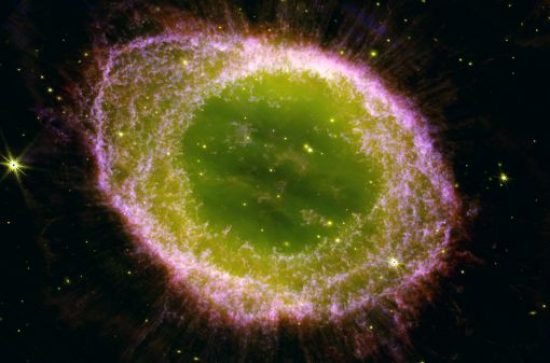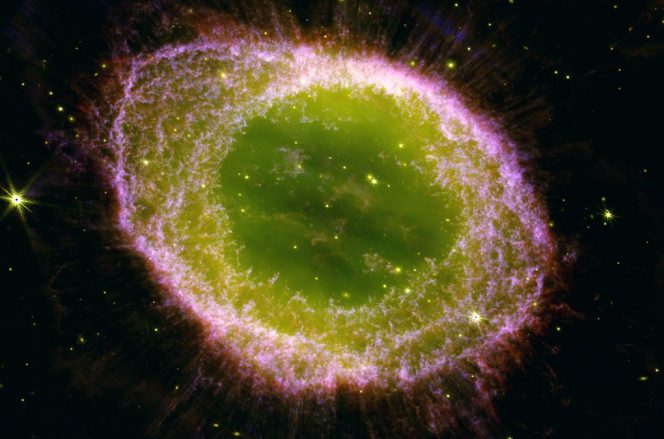

For many sky enthusiasts, the Ring Nebula is a well-known object that is visible all summer long and that is located in the constellation Lyra. A small telescope will already reveal the characteristic donut-like structure of glowing gas that gave the Ring Nebula its name. It is a planetary nebula, objects that are the colourful remnants of dying stars that have thrown out much of their mass at the end of their lives. The Ring Nebula’s distinctive structure and its vibrant colors have long captivated the human imagination. The stunning visuals captured by the JWST offer an unparalleled opportunity to study and understand the complex processes that shaped this cosmic masterpiece.
Prof Mike Barlow, the lead scientist of the JWST Ring Nebula Project, expressed excitement about the findings: "The James Webb Space Telescope has provided us with an extraordinary view of the Ring Nebula that we've never seen before. The high-resolution images not only showcase the intricate details of the nebula's expanding shell but also reveal the inner region around the central white dwarf in exquisite clarity. We are witnessing the final chapters of a star's life, a preview of the Sun’s distant future so to speak, and JWST's observations have opened a new window into understanding these awe-inspiring cosmic events. We can use the Ring Nebula as our laboratory to study how planetary nebulae form and evolve."

Click here to open image in full resolution
The Ring Nebula's stunning features are a testament to the stellar life cycle. Approximately 2,600 light-years away from Earth, the nebula was born from a dying star that expelled its outer layers into space. What makes these nebulae truly breath-taking is their variety of shapes and patterns, that often include delicate, glowing rings, expanding bubbles or intricate, wispy clouds. These patterns are the consequence of the complex interplay of different physical processes that are not well understood yet. Radiation from the hot central star now lights up these layers. Just like fireworks, different chemical elements in the nebula emit light of specific colors. This then results in exquisite and colourful objects, and furthermore allows astronomers to study the chemical evolution of these objects in detail.
"These images hold more than just aesthetic appeal; they provide a wealth of scientific insights into the processes of stellar evolution. By studying the Ring Nebula with JWST, we hope to gain a deeper understanding of the life cycles of stars and the elements they release into the cosmos," adds Dr. Cox, the co-lead scientist of the JWST Ring Nebula Imaging Project.
The international research team is composed of researchers from the UK, France, Canada, USA, Sweden, Spain, Brazil, Ireland and Belgium and are analyzing these images. “Stay tuned”, says Prof Barlow, “JWST/MIRI images of the Ring Nebula are coming soon as well!”
The James Webb Space Telescope, a joint collaboration between NASA, the European Space Agency (ESA), and the Canadian Space Agency (CSA), has proven to be a game-changer in astronomy. Its capabilities go beyond what was possible with previous space telescopes, allowing scientists to peer deeper into the cosmos and explore new frontiers of the universe.
